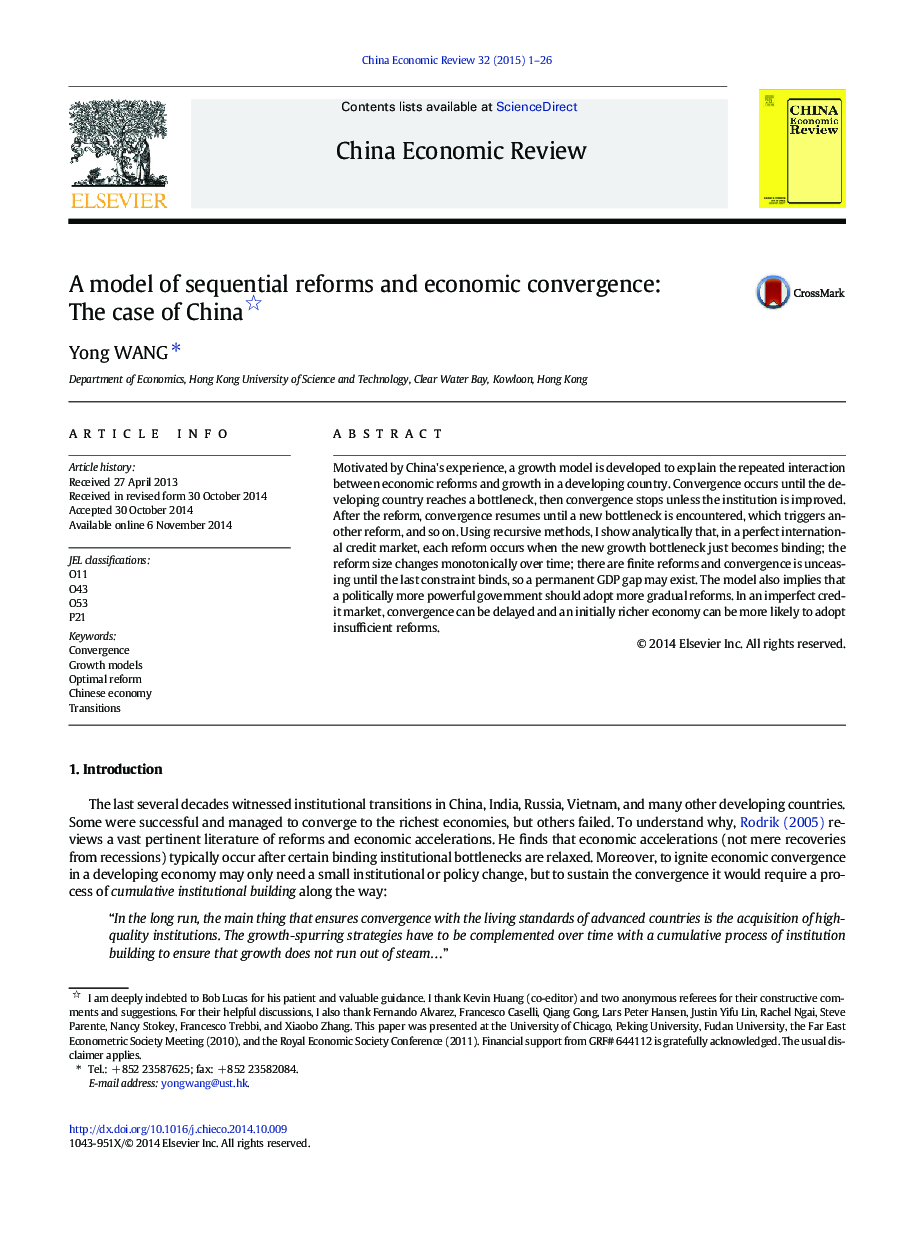| کد مقاله | کد نشریه | سال انتشار | مقاله انگلیسی | نسخه تمام متن |
|---|---|---|---|---|
| 5047517 | 1476269 | 2015 | 26 صفحه PDF | دانلود رایگان |
- Formalize the repeated interactions between convergence and sequential reforms
- Optimal reform occurs precisely when the growth bottleneck just binds.
- Reform size changes monotonically over time and there are finite reforms.
- A politically more powerful government should adopt more gradual reforms.
- An initially richer economy may make less sufficient reforms under imperfect credit market.
Motivated by China's experience, a growth model is developed to explain the repeated interaction between economic reforms and growth in a developing country. Convergence occurs until the developing country reaches a bottleneck, then convergence stops unless the institution is improved. After the reform, convergence resumes until a new bottleneck is encountered, which triggers another reform, and so on. Using recursive methods, I show analytically that, in a perfect international credit market, each reform occurs when the new growth bottleneck just becomes binding; the reform size changes monotonically over time; there are finite reforms and convergence is unceasing until the last constraint binds, so a permanent GDP gap may exist. The model also implies that a politically more powerful government should adopt more gradual reforms. In an imperfect credit market, convergence can be delayed and an initially richer economy can be more likely to adopt insufficient reforms.
Journal: China Economic Review - Volume 32, February 2015, Pages 1-26
